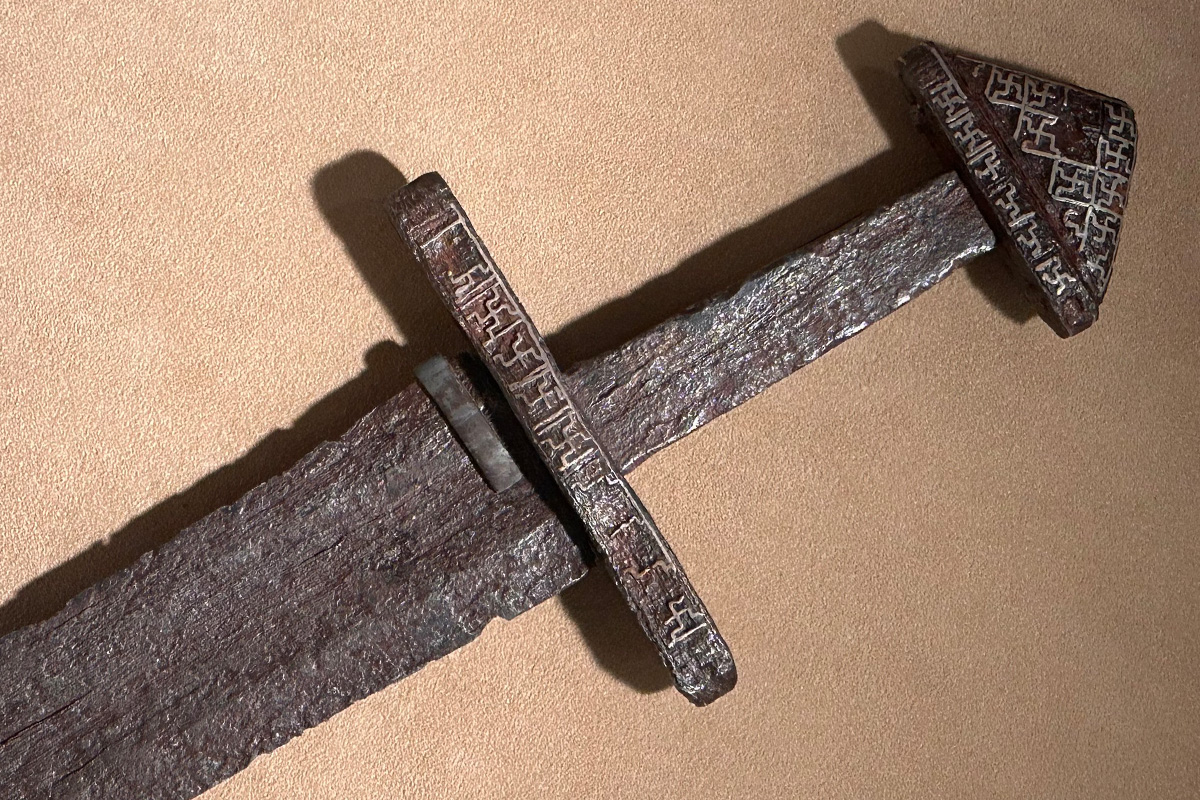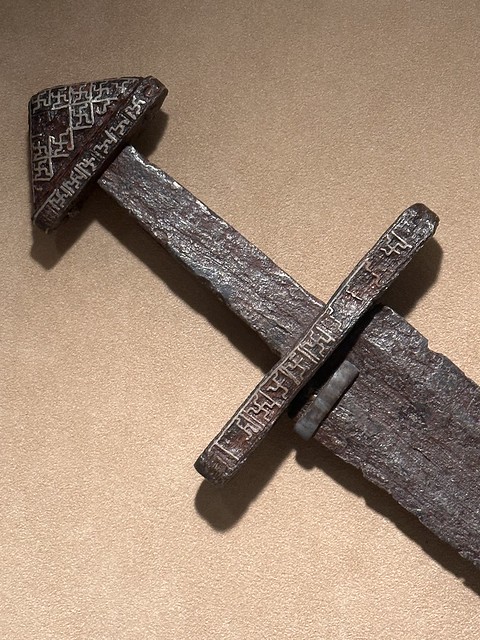Introduction
If you happen to visit the Metropolitan Museum of Art in New York, don't miss out on discovering a captivating relic from the past – a Viking sword from 800-900 AD. On loan from the exclusive collection of Laird R. Landmann and Kathleen E. Kinney, this remarkable sword carries a rich history that spans over a millennium. Adorned with an intriguing series of swastikas on its hilt, it has piqued the curiosity of scholars and enthusiasts worldwide.
A Sword of Distinction
This Viking sword stands as a testament to the remarkable craftsmanship of its creator, Hartolfr. His name is etched onto the blade, signifying his pride in the artistry. The sword's intricate design, coupled with the use of pattern-welded iron for the blade, showcases the craftsmanship of the Viking Age. Moreover, the sword boasts silver wire inlays that add an air of luxury. These features combined to make it a symbol of prestige and authority in its era.
Exploring the Swastika Enigma
While the sword's craftsmanship is exceptional, its most intriguing element is the series of swastikas on the hilt. The swastika is a symbol with a multifaceted history, its roots stretching back to 10,000 B.C. when it was carved into mammoth ivory in the region of current day Ukraine. Over the ages, it has carried positive connotations, symbolizing prosperity and well-being.
The Symbol's Multifaceted Legacy
The swastika's rich history extends beyond its Viking connection. It has been found in various ancient civilizations across the globe. The Aztecs and Mayans incorporated it into burial mounds, clothing, and jewelry. In Europe, these symbols can be spotted in Roman catacombs, churches, plaza stones, and graves. Originating from the Sanskrit language, where "swa" signifies "higher self," "asti" means "being," and "ka" acts as a suffix, the term suggests "being with a higher self."
A Dark Chapter and Ongoing Redemption
The swastika faced a tragic twist in the 20th century when Adolf Hitler appropriated it, linking it to death and destruction. This association cast a long shadow on its history. However, contemporary efforts aim to recognize the swastika's extensive heritage and disentangle it from its dark associations. Organizations such as the Jewish Virtual Library are taking a positive approach, educating the public about its ancient significance and working to restore its reputation.
Preserving the Past and Promoting Understanding
As you explore this remarkable artifact, it's crucial to remember that the swastika is just one of many symbols that have evolved and transformed over time. This Viking sword, shared by Laird R. Landmann and Kathleen E. Kinney, offers a unique opportunity to engage with the rich tapestry of history. It's not only a study of craftsmanship but also a glimpse into the intricate layers of human culture, from its earliest roots to its most challenging moments in the 20th century and even today, and its ongoing journey towards redemption. I invite you to explore the Viking sword in person at the metropolitan museum of art while it's on view.


No Comments.